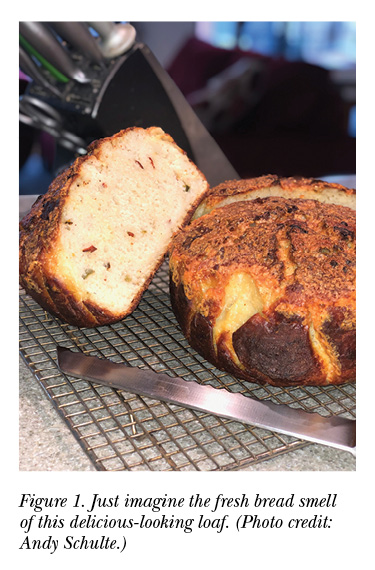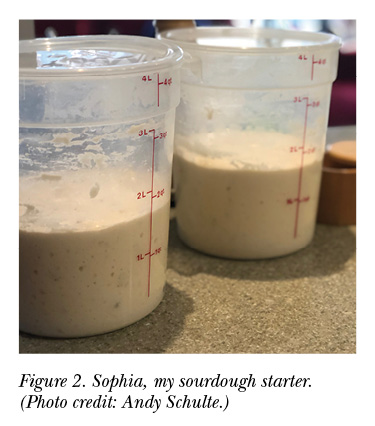By Sharon Burton | STC Associate Fellow

“I just don’t feel I understand bread,” I said to my boyfriend, Andy, one cold, inland Southern California January day in 2019. “I know how to make it, but I don’t really understand it.”
That’s how it started. I just wanted to understand bread.
Being a good technical communicator, of course I wanted to understand bread. It’s what we do—it’s not enough to write about train crossing equipment, we want to understand train crossing equipment. We’re a curious people, we tech comm folks, and I wanted to understand bread.
Every weekend for months, I made the same loaf of yeast-based bread. The first loaves were not great, but they were fresh bread, and we happily ate them. Finally, around June, I was consistently getting the results I wanted, and they were amazing.
Then I shifted to no-knead, fermented bread, and everything started to go off the tracks.
No-knead, fermented bread uses very little actual yeast and takes 12 to 18 hours to rise. That slow rise is really a fermenting period and adds a deep flavor to the bread that you can’t otherwise get. It’s the method I use for many of my breads now. It’s like shifting from copying and pasting text to automated content reuse—you just can’t go back.
For months, I made two loaves every weekend: One for us and one for friends. People started casually asking if I was making bread that weekend. I carried fresh bread into the gym to give to my personal trainer, pied piper to groups of skinny, gluten-free, paleo devotees caught in the fresh bread smell (Figure 1).
“I think I want to learn about sourdough,” I said to Andy one August afternoon in 2019, and that’s how we left the tracks completely and careened into the wilderness.

Sourdough is based on the wild yeast that grows in your environment. You grow and feed and nurture it to replace store-bought yeast in your breads. It’s how bread was made for hundreds (thousands?) of years when you couldn’t go to the local grocery and buy commercial yeast. You grew your own.
I’ve grown my own, and her name is Sophia (Figure 2). She’s about 18 months old and has a lovely sharp, sour flavor. She lives on the counter in a big bucket, and I feed her daily. Sophia can, if we could travel, live in the refrigerator for up to 10 days between feedings.
Using store-bought yeast, I’ve also been working on mastering ciabatta bread and French bread. My baguettes are turning out well, but I’m not yet satisfied with my ciabatta. It’s a complex bread with exacting steps.
Do I understand bread now, as I start my third year of weekly bread baking? A little. Enough that I have two loaves of sourdough with aged cheddar and garden-grown jalapeño peppers in the oven on the proofing setting. They’re still on the first rise, after fermenting overnight on the counter. It’s my recipe, based on what I know and the results I want. And the house smells amazing.
There is so much more to learn, I may have years before I really understand bread.
SHARON BURTON (sharontechwriter@gmail.com) works remotely for Expel as a senior content strategist. In her spare time, she knits, sews, cooks, grows food, bakes bread, and rides her bike or—pandemic allowing—goes to the gym. Two nights a week, Sharon co-teaches baby engineers to communicate at the University of California, Riverside with fellow teacher Bonni Gonzalez.


